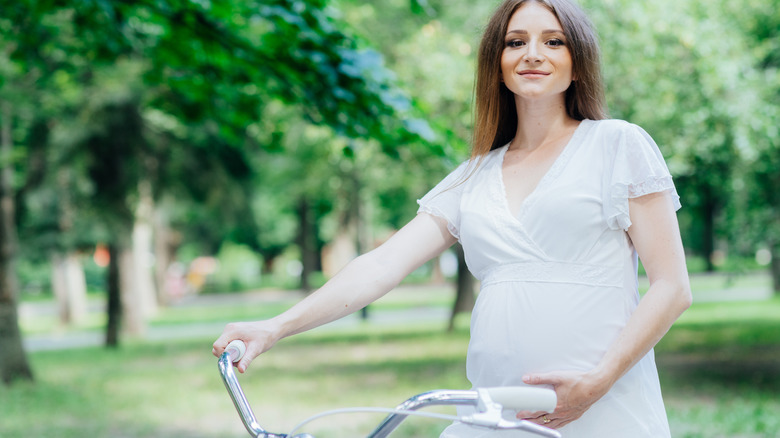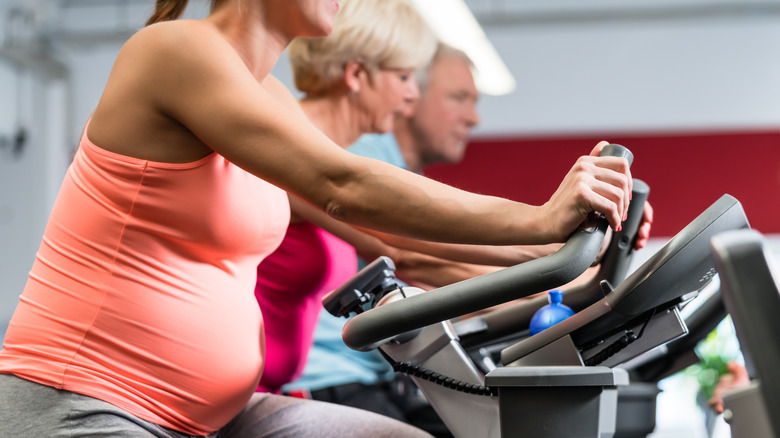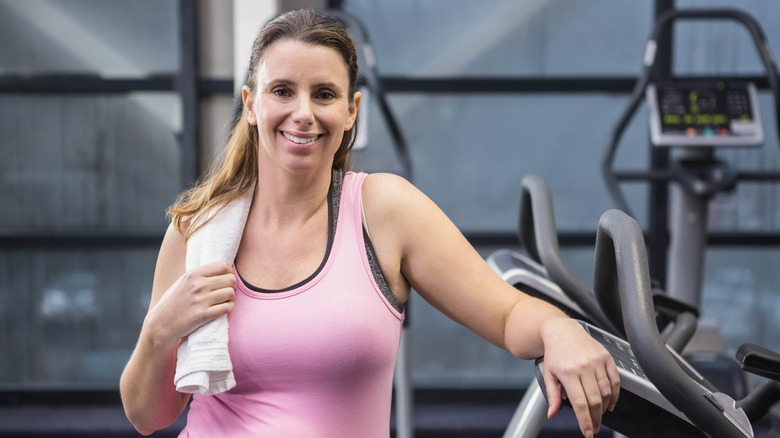Can You Ride A Bike While Pregnant?
Most health experts agree that moms-to-be need just as much exercise as anyone else. If you're carrying a baby, aim for at least 150 minutes of brisk walking, dancing, or even jogging each week, suggests the American College of Obstetricians and Gynecologists (ACOG). Female athletes and other women who were active before pregnancy should be able to stick to their fitness routine. Your best bet is to consult your OB-GYN and see how your body reacts to different types of exercise.
For example, ACOG explains that women have an increased risk of injury and falls during exercise due to the changes occurring in their bodies during pregnancy. Your growing belly can put stress on the joints and muscles, which in turn may affect your balance. You may also experience fatigue and shortness of breath because your body needs more oxygen than usual. Apart from that, regular exercise for pregnant women is safe and beneficial as long as there are no problems with your pregnancy.
Clinical evidence indicates that physical activity can help future mothers maintain their weight, strengthen the pelvic floor muscles, and reduce labor duration, notes a 2015 review published in Sports Health. What's more, it makes it easier to manage depression and gestational diabetes. Some studies also suggest that pregnant women are less likely to have large babies or need a C-section, according to the above review.
With that in mind, you may wonder if it's safe to ride a bike during pregnancy. Let's see what the experts have to say.
Is riding a bike safe for moms-to-be?
Cycling less than 10 miles per hour is considered a moderate-intensity activity, explains the American Heart Association. Therefore, it should be safe during pregnancy as long as you don't go overboard. This form of exercise has substantial health benefits, from improved cardiovascular and musculoskeletal health to mental well-being. It not only keeps you fit but also increases your strength and endurance, reduces anxiety, and wards off depression. On top of that, it energizes your mind and body, making it easier to cope with pregnancy fatigue.
A meta-analysis conducted by the University of Western Australia assessed the benefits of cycling during pregnancy. As it turns out, this activity cannot prevent gestational diabetes, but it may improve body composition, mood, cardiovascular fitness, and pregnancy health. Additionally, it may reduce stress and anxiety levels in moms-to-be.
Indoor cycling, including spin classes, is safe too, notes the American Pregnancy Association. Riding a stationary bike is less likely to result in a fall, which could put your pregnancy at risk. As a rule of thumb, ride in a seated position and cycle at a moderate pace. Increase workout intensity and duration gradually so your body can adjust. If you prefer to ride your bike outdoors, do it on flat terrain whenever possible and wear a helmet.
How to safely ride a bike while pregnant
Both indoor and outdoor cycling can be a great choice for most women during pregnancy, but you should still use caution. For starters, you may experience dizziness — especially during the first trimester, explains the American Pregnancy Association. If that happens while riding a bike, you could fall and injure yourself. Gestational diabetes, low back pain, and other conditions can further increase the risk of falling, according to 2020 research published in the Journal of Maternal-Fetal & Neonatal Medicine.
Given these aspects, it's important to listen to your body and get off the bike if something seems wrong. Drink plenty of water to prevent dehydration and eat a small snack before starting your ride. Also, note that you may not feel comfortable riding a bike later in pregnancy because of your growing belly. This can also increase your risk of falling, so you may need to choose a different type of exercise, says Dr. Michele Hakakha (via Parents).
PeopleForBikes recommends wearing a supportive bra to keep your breasts in place and reduce discomfort. You may also want to invest in a pair of bib shorts, which will provide better support for your growing bump than leggings or casual pants. As a general rule, stop riding your bike if you experience pain, muscle weakness, contractions, or difficulty breathing. Remember, this isn't the best time to push past your limits. Start small, take breaks as often as needed, and be kind to your body.


